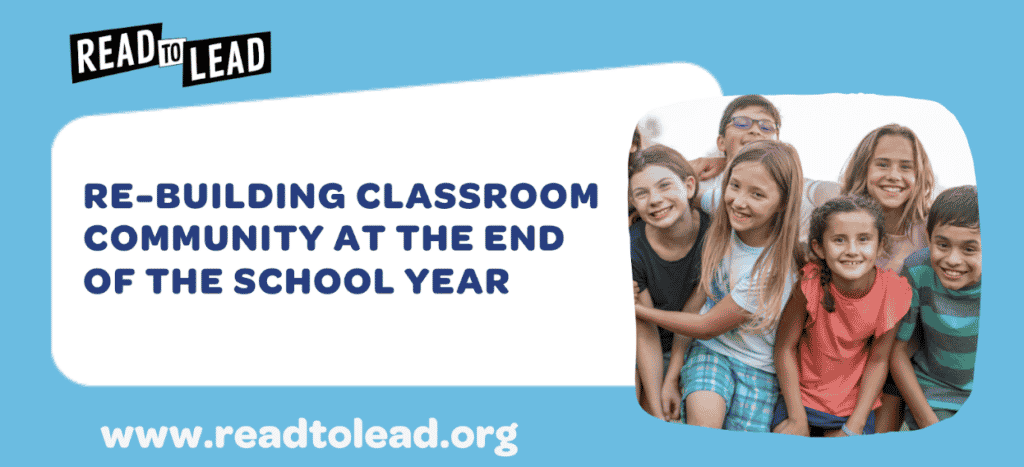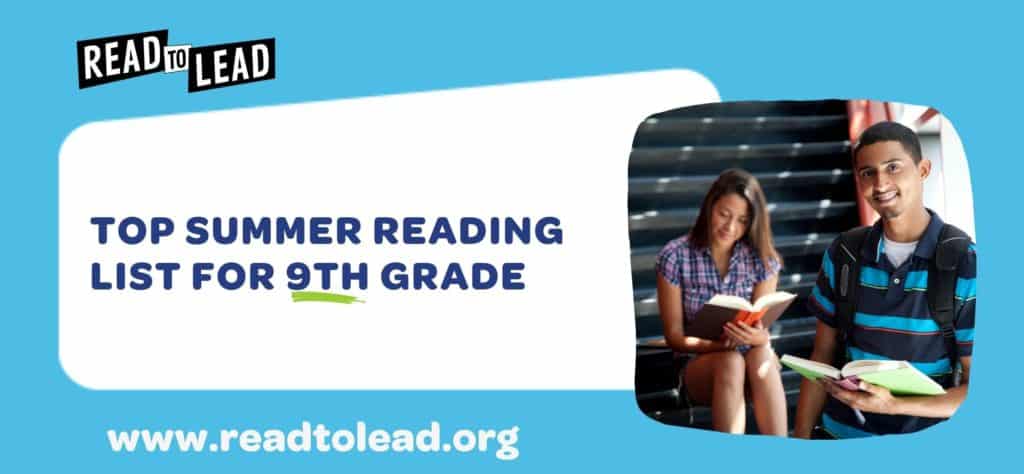Chicago educator and Director of Instruction for The Catalyst Schools’ Circle Rock Charter School, Erika Whitehead is passionate about using innovative lesson plans and resources to teach students real-world skills. She’s been using Read to Lead since the beginning of the 2018-2019 school year with the 12 students in her intervention group, where she helps them continue to get ahead in their studies.

As a veteran educator, Ms. Whitehead uses a combination of the digital platform and the hands-on lesson plans in a way that works best for her classroom structure — and the needs of her students. Though this is the first year the schools have been using Read to Lead in her intervention classroom, Ms. Whitehead is already seeing positive returns for her 5th-6th grade students.
“[I teach with Read to Lead] by taking the lesson plans and making them my own. I know some teachers like being tied to the specific lesson plans, but I’ve found that things don’t have to happen verbatim,” Ms. Whitehead said. “Read to Lead lets me be flexible in my instruction. Depending on what my students need, it can be very important to start with a lesson plan instead of going straight into an episode because it sets the tone and expectations for students.”
Using Read to Lead with her students has shown them that learning can be fun and engaging. Adding the corresponding project-based lesson plans to her curriculum gives Ms. Whitehead’s students the opportunity to take the skills learned in the classroom and create positive change in their communities — a primary goal of The Catalyst Schools.
As part of Community in Crisis, the magazine project has had a strong impact on classroom engagement for Ms. Whitehead’s students. In addition to improving their literacy and comprehension skills while they play each episode, the hands-on activity allows them to practice what they have learned outside of the platform.
“Because of Read to Lead, my students have learned about the difference between an argumentative piece and an informational piece, and they are using this knowledge to publish their own magazines,” Ms. Whitehead said. “But I didn’t go straight into the magazine project. It was important for me to start with my own adaptation of the lesson plans first. Then the students work through the episode on their own. After they finish the episode, I move into the project-based activity.” Students were partnered up based on interests and used graphic organizers to brainstorm their ideas for a magazine. Ms. Whitehead noted, “The lesson plans really give me a baseline to start from, but I adjust them to work for my teaching style and the learning styles and needs of my students.”
How do you tailor Read to Lead to fit your classroom or out-of-school time program? Check out this suggested lesson plan based on After The Storm Pre-Game Mini-Lesson One, and let us know what you think!
OVERVIEW and OBJECTIVE
- Students will discuss leadership skills required to succeed in the role of editor at a community newspaper. In their role as editor, they will assign themselves a topic for an argumentative and an informational article and identify how the editor works with the writers to build content.
BIG QUESTION(S)
- What are some qualities good leaders demonstrate?
- Why is it necessary to have someone (an editor/boss) to oversee writers/other employees?
- What two general types of articles do publications feature and why are both types important?
STANDARDS MET
- CCSS.ELA-Literacy.RI.6.2
- CCSS.ELA-Literacy.SL.6.1
MATERIALS NEEDED
- Age-appropriate magazines or newspapers
- Notebook or access to a shared Google Doc
CAREER CONNECTION/INTRO
- Discuss the job description and necessity of an editor.
- Use the mini-lesson to guide discussion.
- Ask the students in what ways the skills of a good editor can be applied to other leadership roles.
- Describe the day’s lesson and end goal– the students will play the role of editor to decide on the topics for their articles.
- They will need to pick a topic that on which they can write both an argumentative and an informational piece.
DIRECT INSTRUCTION
- With the students, define and provide examples for both argumentative and informative writing.
- They should read the corresponding articles in the magazines and/or newspapers, identify the type of article, and give reasons for their choice.
STUDENT WORK
- Working independently, students identify and rank their top 2-3 choices of magazine or newspaper topics. (10 minutes)
- In small groups, students collaborate and discuss why they chose these topics in their role as editor.
- What topics do they feel strongly about?
- What topics and articles will lead to the most cohesive final product?
- If there are matching topics, how do they compromise and decide who writes about what topic?
- Each group should select two topics they would ask their writers to pursue if they were the editor of a community newspaper, and explain how they made their selection.
ASSESSMENT/RECAP/CLOSING
- Assess your students’ retention of material by asking them the lesson plan’s Big Questions.
- If there were some questions and definitions they struggled with earlier, ask them again, in a reworded question.
- Discuss how this experience has changed their understanding of the role of an editor.
ADJUSTMENTS
For students who may have an IEP that allows for modified writing assignments, this could be adjusted for a visual/photo assessment.
- Example: They could do a photo assignment in the vein of showing the differences between a factual Instagram account like National Geographic or Discovery versus an Instagram influencer sponsored content.
- (They can create posts for their magazines with appropriate photos and captions to define argumentative and informative positions.)
About Read to Lead
Read to Lead uses the power of game-based learning to empower middle school students to build literacy, life, and career skills. Teachers can sign up for a free account to get started!


